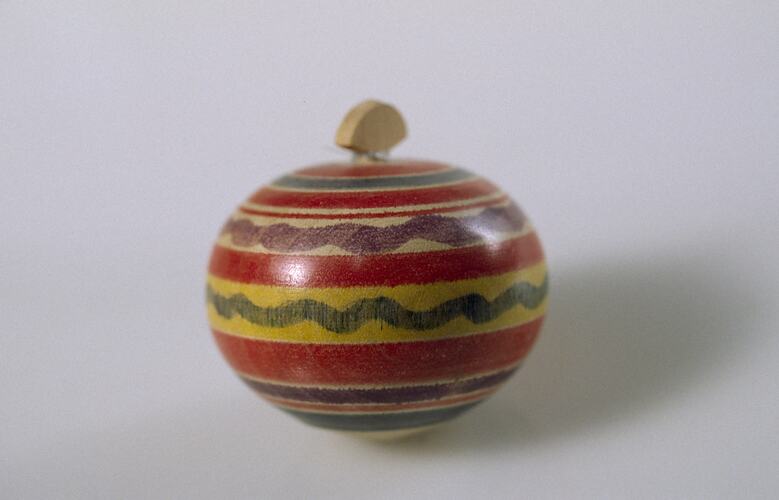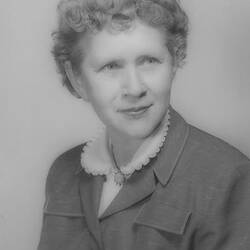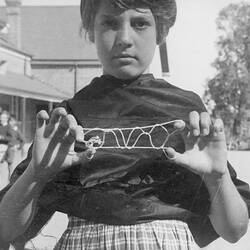Summary
Alternative Name(s): Finger Top
Small wooden finger top, painted with coloured rings over whole surface.
In 1962-63, during sabbatical leave, American folklorist Dr Dorothy Howard undertook research in Tonala, a pottery village in Mexico. She had for many years been keen to study a single child intensively in the context of his family and community, and collect play materials from the local community. She choose to study Pedro Munoz, who was 12 years old in 1962. She published a book based her research, Pedro of Tonalá, in 1989. In later years she studied a girl from ages two to four in Lincoln, Nebraska (1967-1969), and in 1977 published a detailed account of her own childhood in Dorothy's World: Childhood in Sabine Bottom, 1902-1910.
This object is part of the Dorothy Howard Collection, gathered by eminent US folklorist and scholar Dr Dorothy Howard, who visited Australia as a Fulbright fellow in 1954-55 to document and research the folklore of Australian children. The Collection primarily contains documents, photographs and objects from Australia and the United States. It is now contained with the Australian Children's Folklore Collection (ACFC), unique in Australia, documenting contemporary children's folklore across Australia and in other countries reaching back to the 1870s. The Collection has a strong component of research material relating to Victoria.
Physical Description
Small wooden finger top, painted with coloured rings over whole surface. Rings are bands of red, yellow, white, light blue, turquoise and purple. Point of the top is finished with clear lacquer, and the spindle has a hole drilled in the top.
Significance
Top-spinning is an ancient activity. Tops dated at 1200-1400BC were excavated in Egypt, and they are often mentioned in classical literature. They are found throughout the world and used by adults and children, in rituals as well as for games of skill. There are many different kinds of tops, and the way the are used depends on their size and shape. Top-spinning is a traditional pastime in Mexico, and this object is an example of a hand-made Mexican finger top. It is very decorative, with coloured rings covering its surface, in comparison with other Mexican tops which are made from natural wood and have no decoration at all.
More Information
-
Collection Names
Australian Children's Folklore Collection, Dorothy Howard Collection
-
Collecting Areas
-
Acquisition Information
Cultural Gifts Donation from Dr June Factor, 18 May 1999
-
Acknowledgement
Donated through the Australian Government's Cultural Gifts Program.
-
Place & Date Made
-
Collector
-
Classification
-
Category
-
Discipline
-
Type of item
-
Overall Dimensions
4 cm (Length), 4 cm (Height)
-
References
TASP Newsletter, vol.7, no.3, Spring 1981 - containing articles about and by Dorothy Howard, including information on her Mexican research. Dorothy Howard, 1989, Pedro of Tonalá.
-
Keywords
Children's Play, Games, Handmade Games & Toys, Toys, Making History - Australian Childrens Folklore


